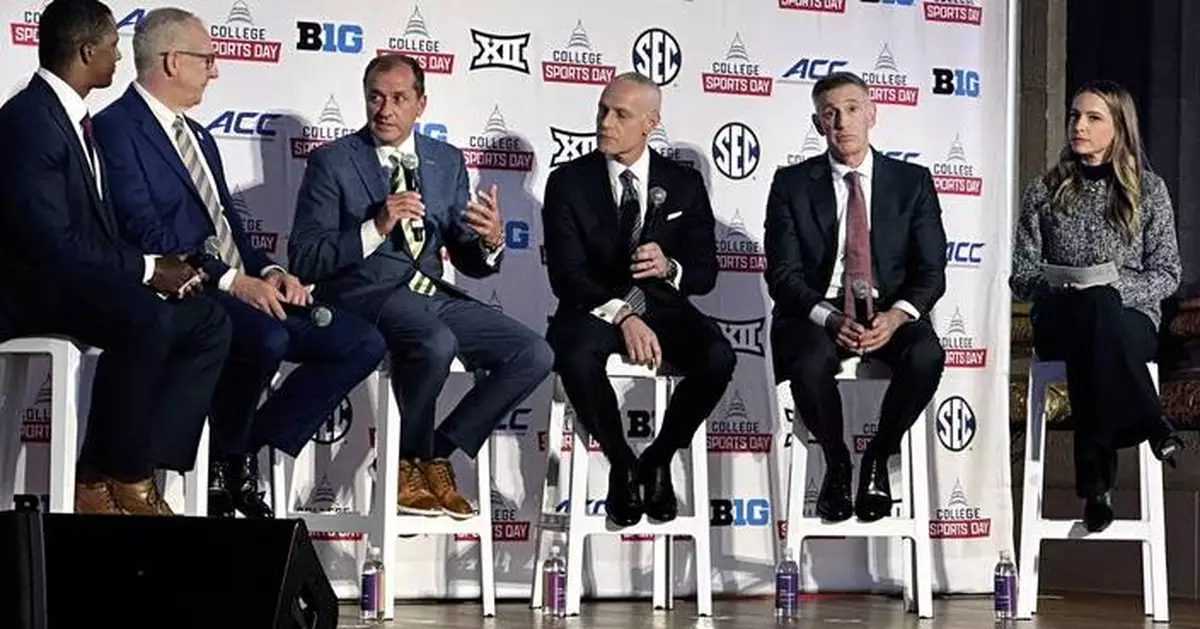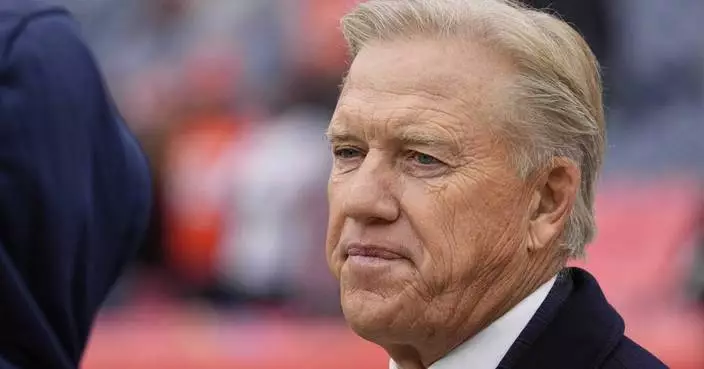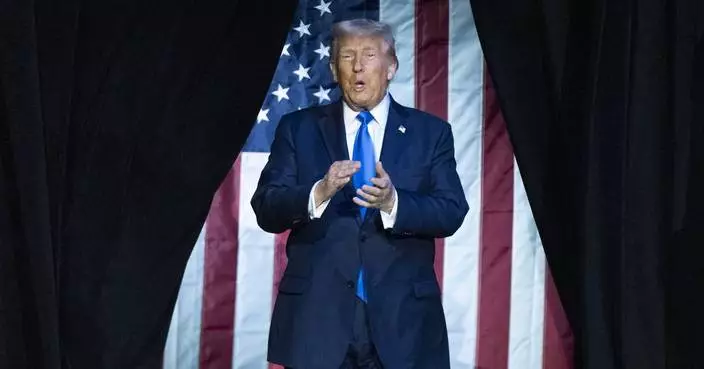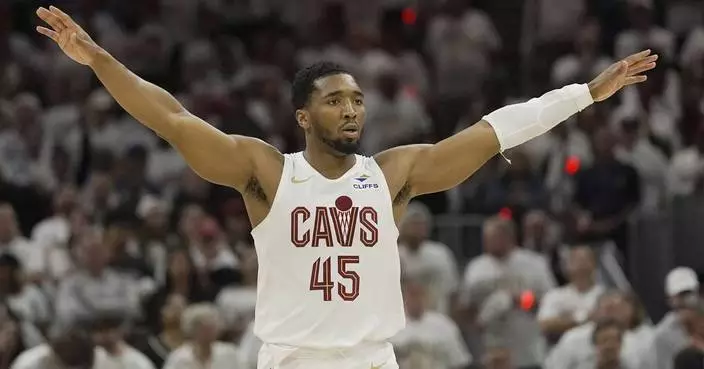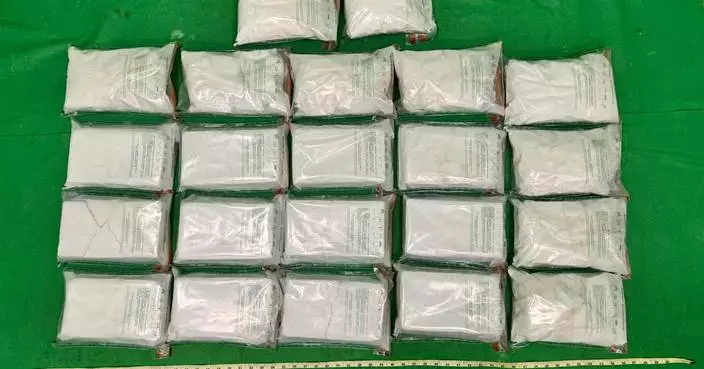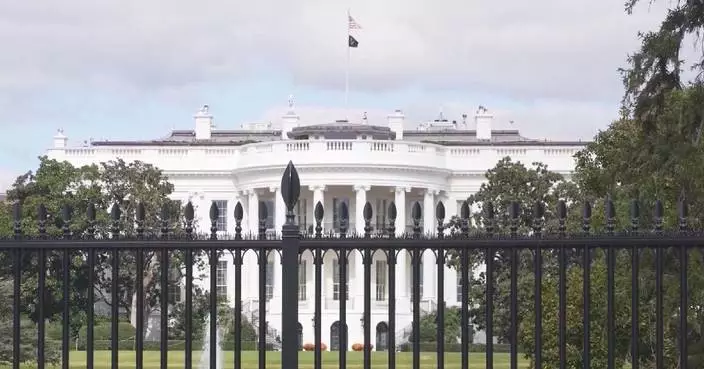WASHINGTON (AP) — While a federal judge considers whether to approve a massive NCAA settlement that would pay athletes over $2 billion and pave the way for even more spending, a large group of industry officials returned to Capitol Hill on Wednesday to lobby lawmakers on legislation to land some antitrust protection for some of the final vestiges of college athletics' amateurism model.
Commissioners of the Power Four conferences, dozens of athletic directors from the SEC, ACC, Big Ten and Big 12, and even some coaches and players spent hours meeting with members of Congress. There was no firm conclusion to the talks, but multiple stakeholders involved came out of them with positive takeaways.
“We had great dialogue throughout the day, so I’m very optimistic we can get there,” Big 12 Commissioner Brett Yormark said. “The common denominator on the Hill is that everyone has a great passion for collegiate athletics. They want to see something that’s sustainable moving forward."
A federal judge held a final hearing Monday on the settlement of a $2.8 billion class-action antitrust lawsuit filed by athletes against the NCAA and its largest conferences, which was approved by the defendants and plaintiffs in May 2024. U.S. Judge Claudia Wilken must give full approval before the terms can go into effect as soon as July 1.
“I think that was a piece of being able to go back to our elected officials and say that we’re trying to do our part,” Louisville athletic director Josh Heird said. “We’re going to ante up and pay $2.8 billion in back damages. We’re going to find a way to fund this $20.5 million revenue sharing. And so with that, in order to get to that goal line, now we need some help from our elected officials.”
Among those who took part were Texas football coach Steve Sarkisian, Auburn men's basketball coach Bruce Pearl fresh off a March Madness trip to the Final Four and Vanderbilt women's basketball coach Shea Ralph.
Discussions revolved around some antitrust protection, standardizing rules nationwide for name, image and likeness (NIL) payments, the transfer portal and whether college athletes should be considered employees.
“What are the downstream problems in addition to the notion that there’s just benefits or a set of hurdles to have to be overcome?” SEC Commissioner Greg Sankey said. "We’ve educated, I think, effectively members of the House and Senate, and we need to keep pushing and to do that with our universities is much healthier than simply doing that as commissioners and doing so in a coordinated way across the four conferences.”
Yormark said the current volume of player movement through the transfer portal is “unsustainable” and cautioned that lawmakers should step up sooner than later to calm that chaos and create national standards.
“Everyone knows there’s a sense of urgency,” Yormark said. "Time is not on our side, so we have to move quickly and swiftly.”
AP college sports: https://apnews.com/hub/college-sports
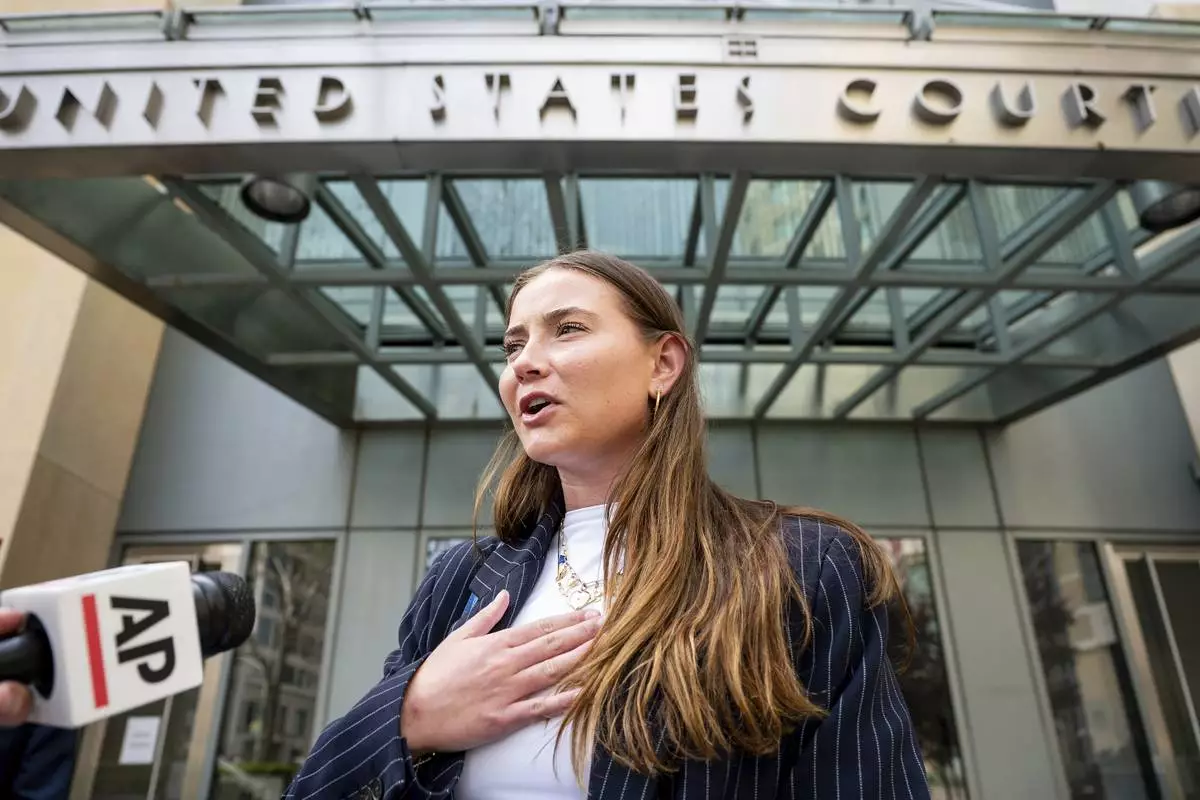
College soccer player Lexi Drumm leaves federal court during a hearing for a landmark $2.8 billion settlement impacting NCAA college athletics on Monday, April 7, 2025, in Oakland, Calif. (AP Photo/Noah Berger)
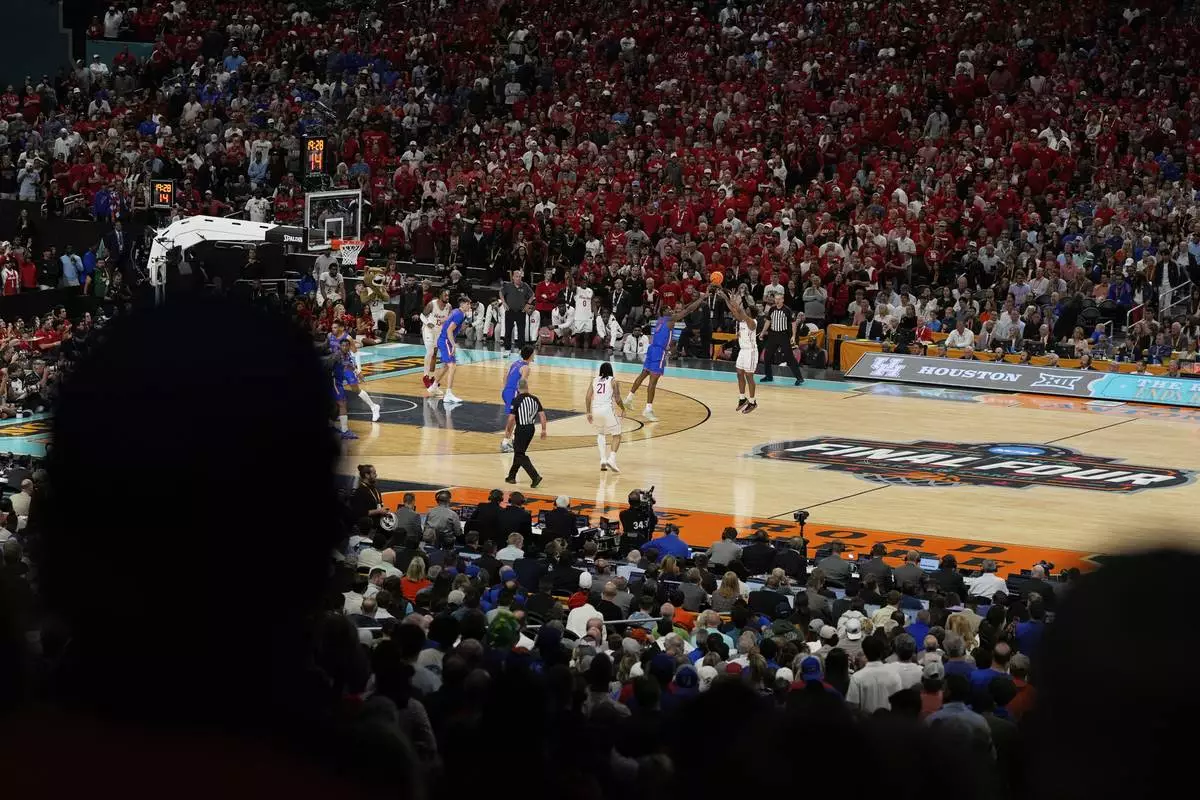
Houston's L.J. Cryer (4) shoots as Florida's Rueben Chinyelu (9) defends during the second half in the national championship at the Final Four of the NCAA college basketball tournament, Monday, April 7, 2025, in San Antonio. (AP Photo/Stephanie Scarbrough)

A logo guide and paint tray are seen as workers prepare this year's court for the Final Four in the men’s NCAA college basketball tournament, Sunday, March 16, 2025, in San Marcos, Texas. (AP Photo/Eric Gay)

The Commissioners of the NCAA's power four conferences, SEC's Greg Sankey, ACC's Jim Phillips, Big 12's Brett Yormark and Big Ten's Tony Petitti speak with ESPN's Roddy Jones, left, and Dana Boyle, right, at the College Sports Day on Capitol Hill reception in Washington, D.C., on Wednesday, April 9, 2025, after they lobbied lawmakers earlier in the day for legislation to standardize name, image and likeness and other rules. (AP Photo/Stephen Whyno )
Wall Street extended its gains to a ninth straight day Friday, marking the stock market’s longest winning streak since 2004 and reclaiming the ground it lost since President Donald Trump escalated his trade war in early April.
The rally was spurred by a better-than-expected report on the U.S. job market and resurgent hope for a ratcheting down in the U.S. trade showdown with China.
The S&P 500 climbed 1.5%. The Dow Jones Industrial Average added 1.4%, and the Nasdaq composite rose 1.5%.
The gains were broad. Roughly 90% of stocks and every sector in the S&P 500 advanced. Technology stocks were among the companies doing the heaviest lifting. Microsoft rose 2.3% and Nvidia rose 2.5%. Apple, however, fell 3.7% after the iPhone maker estimated that tariffs will cost it $900 million.
Banks and other financial companies also made solid gains. JPMorgan Chase rose 2.3% and Visa closed 1.5% higher.
Employers added 177,000 jobs in April. That marks a slowdown in hiring from March, but it was solidly better than economists anticipated. However, the latest job figures don’t yet reflect the effects on the economy of President Donald Trump’s across-the-board tariffs against America’s trading partners. Many of the more severe tariffs that were supposed to go into effect in April were delayed by three months, with the notable exception of tariffs against China.
“We’ve already seen how financial markets will react if the administration moves forward with their initial tariff plan, so unless they take a different tack in July when the 90-day pause expires, we will see market action similar to the first week of April,” said Chris Zaccarelli, chief investment officer for Northlight Asset Management.
The S&P 500 slumped 9.1% during the first week of April as Trump announced a major escalation of his trade war with more tariffs. The market has now clawed back its losses since then, helped by a string of resilient earnings reports from U.S. companies, hopes for de-escalation of trade tensions with China and expectations that the Federal Reserve will still be able to cut rates a few times this year.
The benchmark index is still down 3.3% so far this year, and 7.4% below the record it reached in February.
All told, the S&P 500 rose 82.53 points to 5,686.67. The Dow gained 564.47 points to 41,317.43, and the Nasdaq added 266.99 points to 17,977.73.
The job market is being closely watched for signs of stress amid trade war tensions. Strong employment has helped fuel solid consumer spending and economic growth over the last few years. Economists are now worried about the impact that taxes on imports will have on consumers and businesses, especially about how higher costs will hurt hiring and spending.
The economy is already showing signs of strain. The U.S. economy shrank at a 0.3% annual pace during the first quarter of the year. It was slowed by a surge in imports as businesses tried to get ahead of Trump’s tariffs.
The current round of tariffs and the on-again-off-again nature of Trump’s policy has overshadowed planning for businesses and households. Companies have been cutting and withdrawing financial forecasts because of the uncertainty over how much tariffs will cost them and how much they will squeeze consumers and sap spending.
Hopes remain that Trump will roll back some of his tariffs after negotiating trade deals with other countries. China has been a key target, with tariffs of 145%. Its Commerce Ministry said Beijing is evaluating overtures from the U.S. regarding the tariffs.
Investors had a relatively quiet day of earnings reports following a busy week. Exxon Mobil rose 0.4%, recovering from an early slide, after reporting its lowest first-quarter profit in years. Rival Chevron rose 1.6% after it also reported its smallest first-quarter profit in years.
Falling crude oil prices have weighed on the sector. Crude oil prices in the U.S. are down about 17% for the year. They fell below $60 per barrel this week, which is a level at which many producers can no longer turn a profit.
Block slumped 20.4% after reporting a sharp drop in first-quarter profit that fell short of analysts' forecasts. The financial technology company behind Cash App cited a pullback in consumer spending on travel and other discretionary items as a key reason for the results.
Treasury yields rose in the bond market. The yield on the 10-year Treasury rose to 4.31% from 4.22% late Thursday.
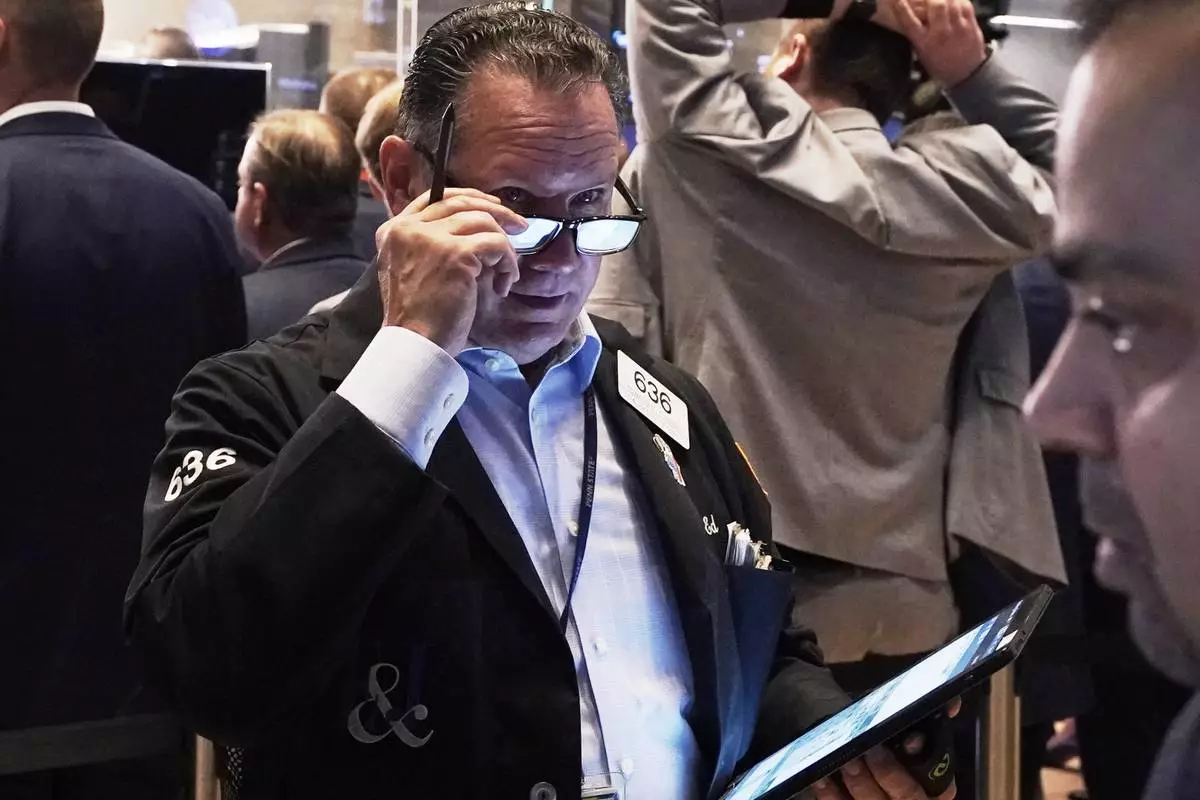
Trader Edward Curran works on the floor of the New York Stock Exchange, Friday, May 2, 2025. (AP Photo/Richard Drew)
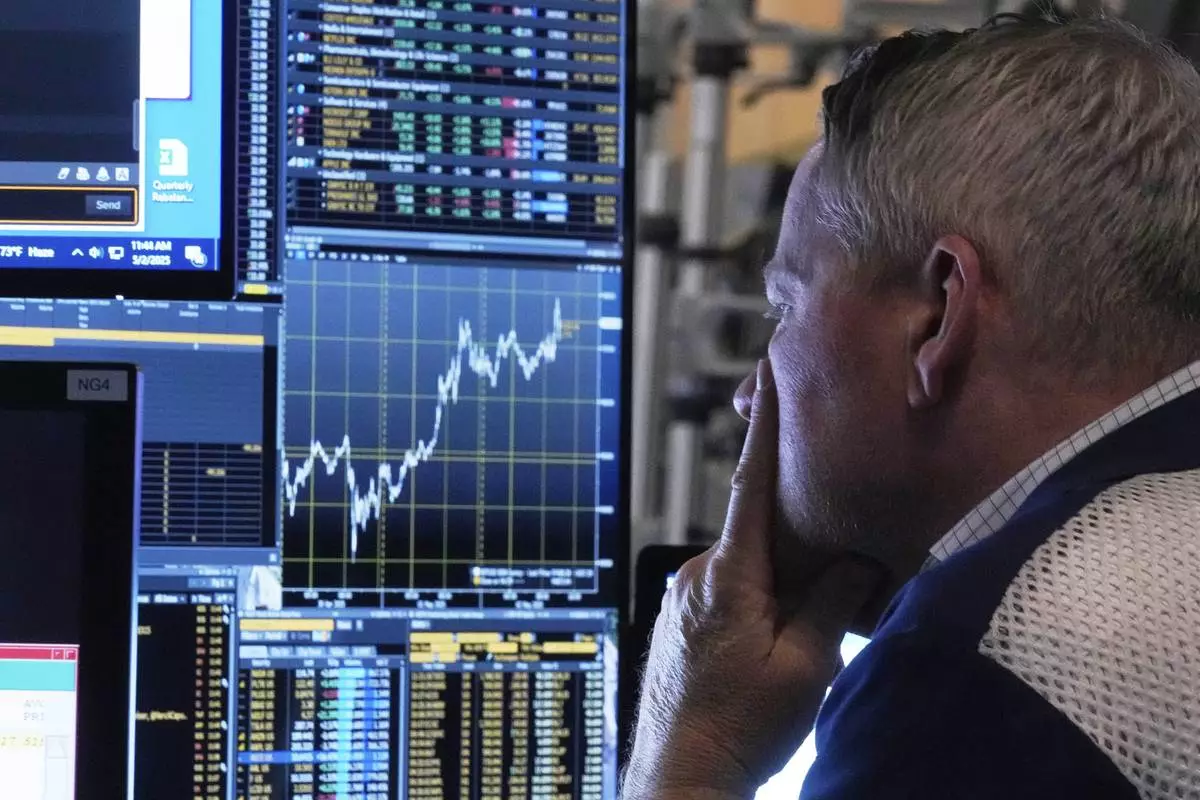
Trader Rob Taylor works on the floor of the New York Stock Exchange, Friday, May 2, 2025. (AP Photo/Richard Drew)
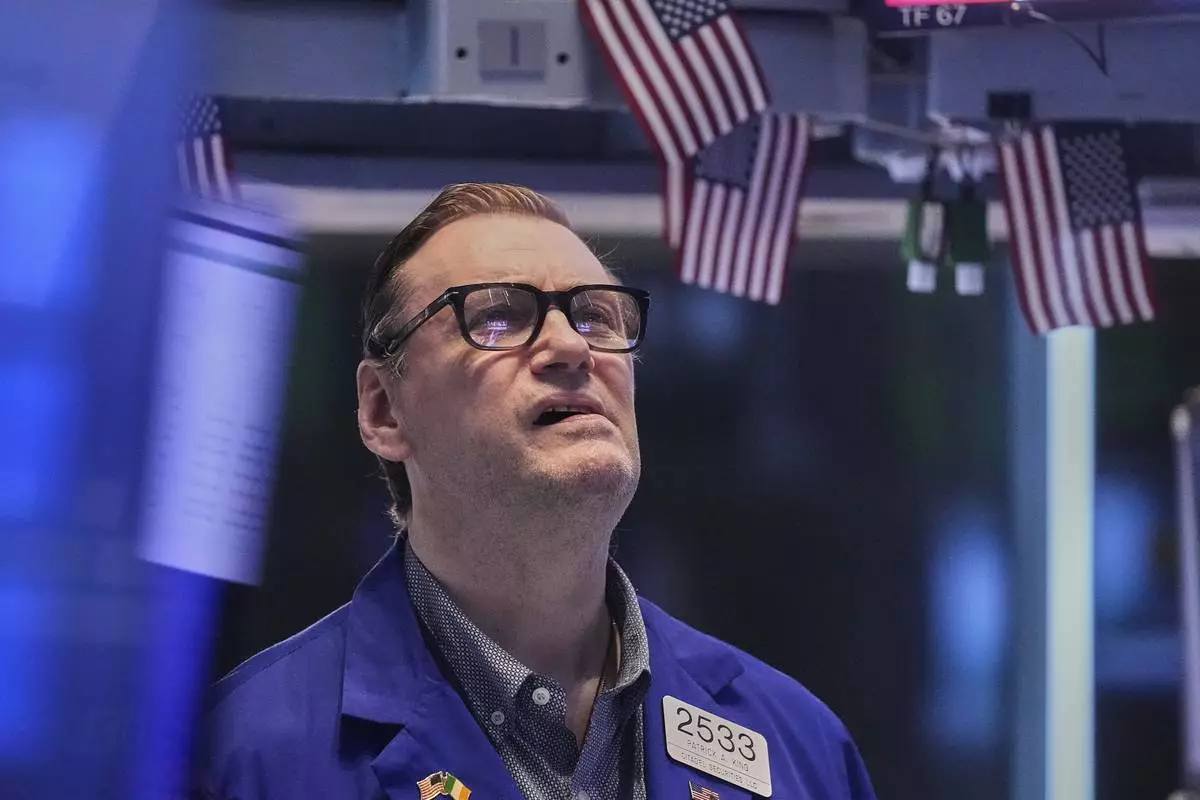
Specialist Patrick King works on the floor of the New York Stock Exchange, Friday, May 2, 2025. (AP Photo/Richard Drew)
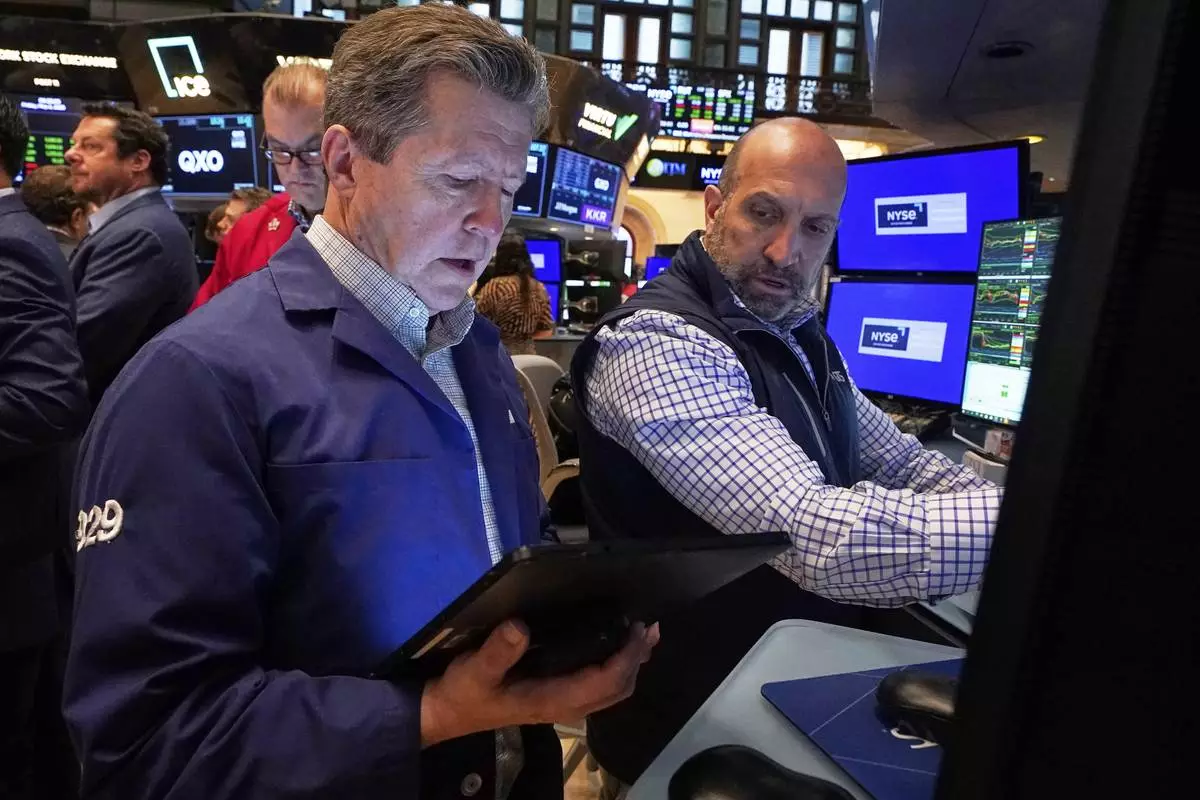
Trader James Matthews, left, and specialist James Denaro work on the floor of the New York Stock Exchange, Friday, May 2, 2025. (AP Photo/Richard Drew)

Specialist Glenn Carell, left, and trader Mathias Roberts, center, work on the floor of the New York Stock Exchange, Friday, May 2, 2025. (AP Photo/Richard Drew)
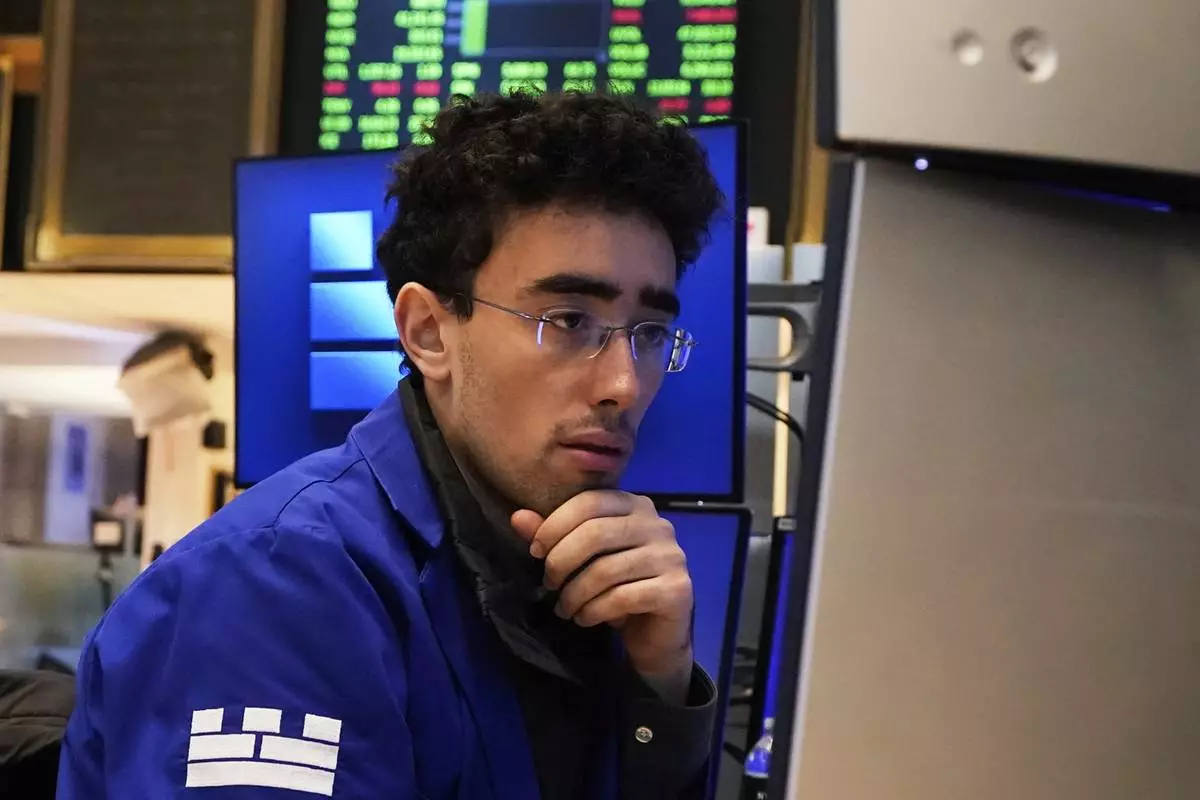
Specialist Alex Weitzman works at his post on the floor of the New York Stock Exchange, Friday, May 2, 2025. (AP Photo/Richard Drew)
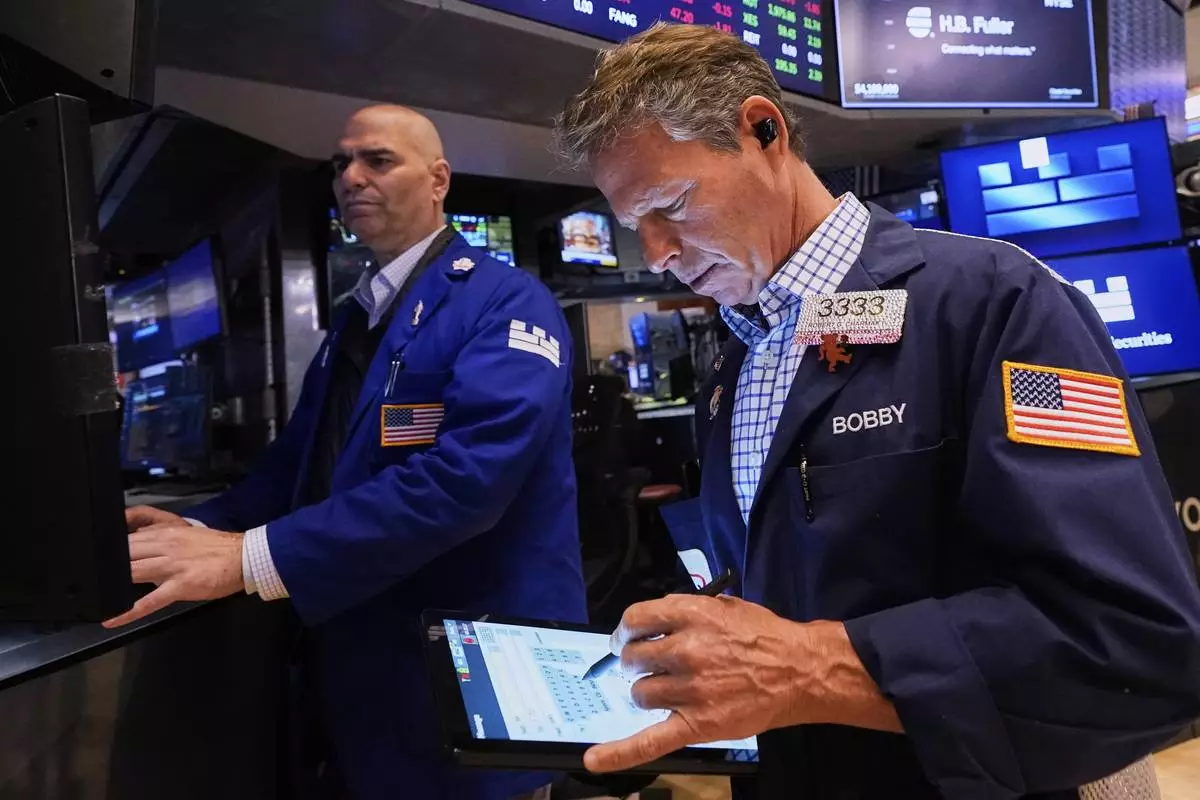
Specialist Philip Finale, left, and trader Robert Charmak work on the floor of the New York Stock Exchange, Friday, May 2, 2025. (AP Photo/Richard Drew)
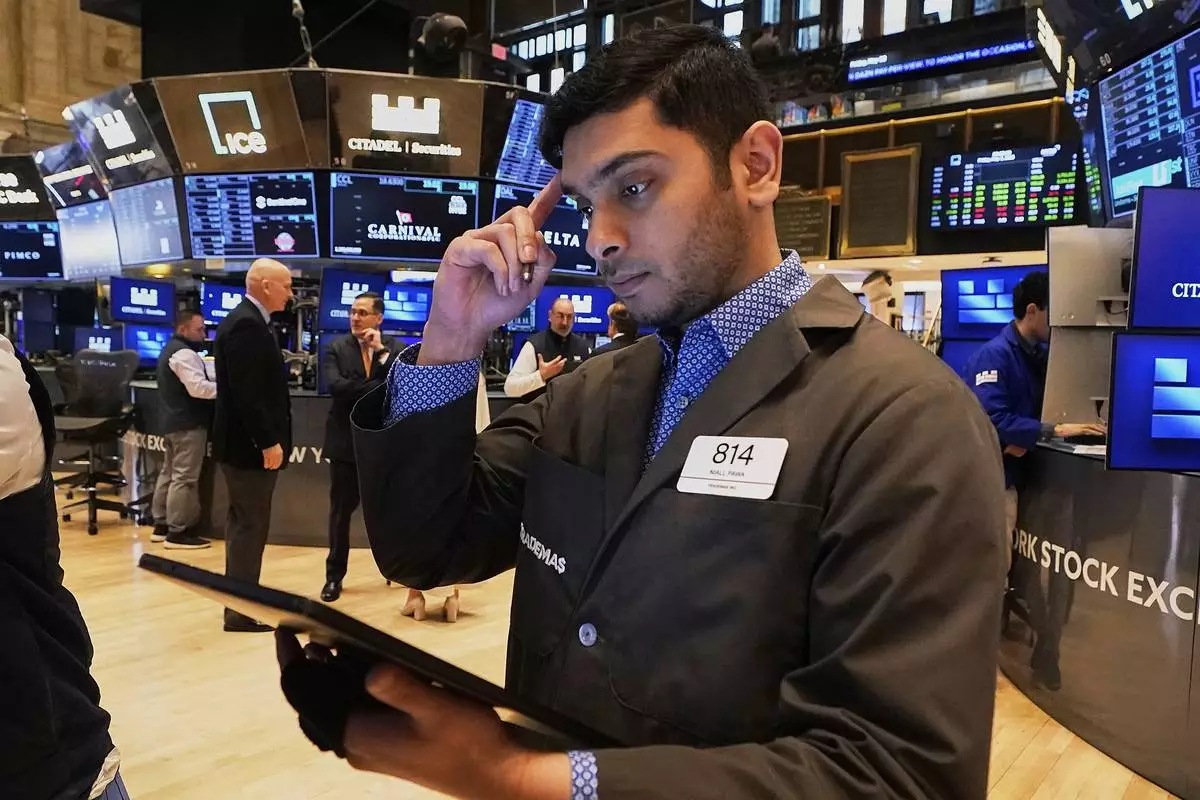
Trader Niall Pawa works on the floor of the New York Stock Exchange, Friday, May 2, 2025. (AP Photo/Richard Drew)
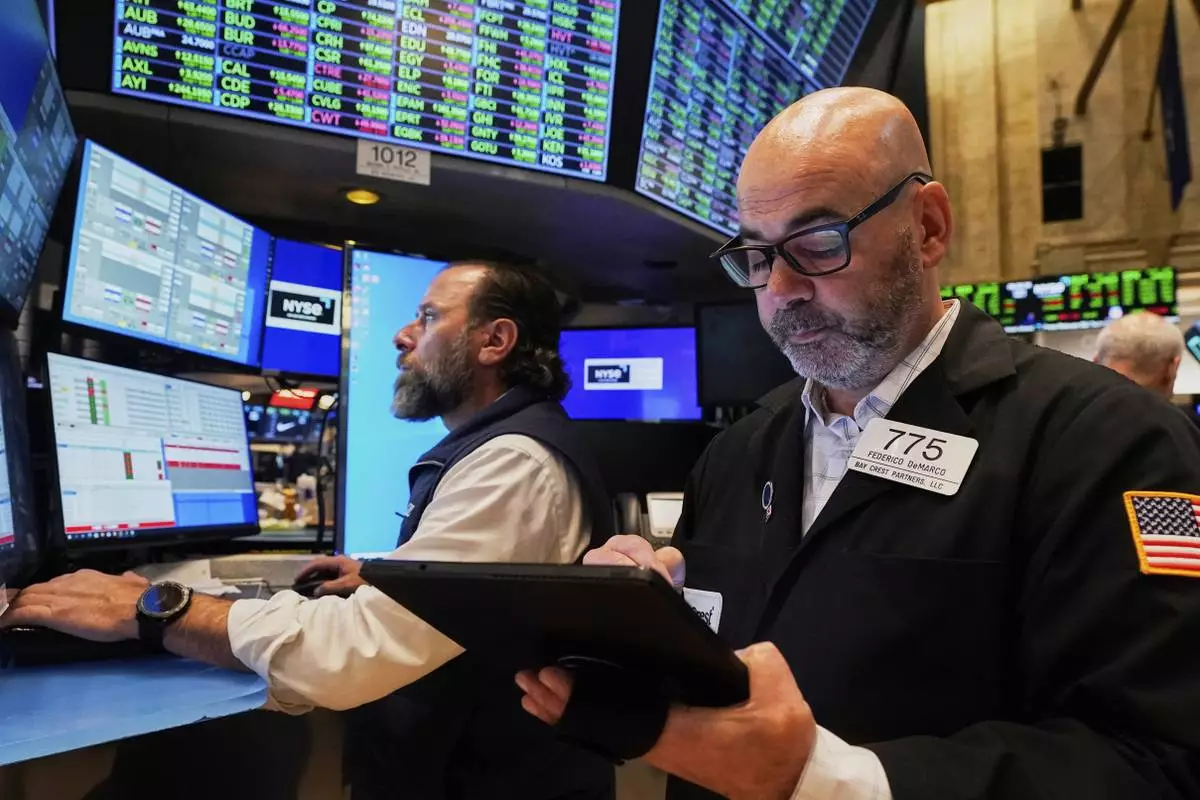
Specialist Michael Pistillo, left, and trader Fred Demarco work on the floor of the New York Stock Exchange, Friday, May 2, 2025. (AP Photo/Richard Drew)
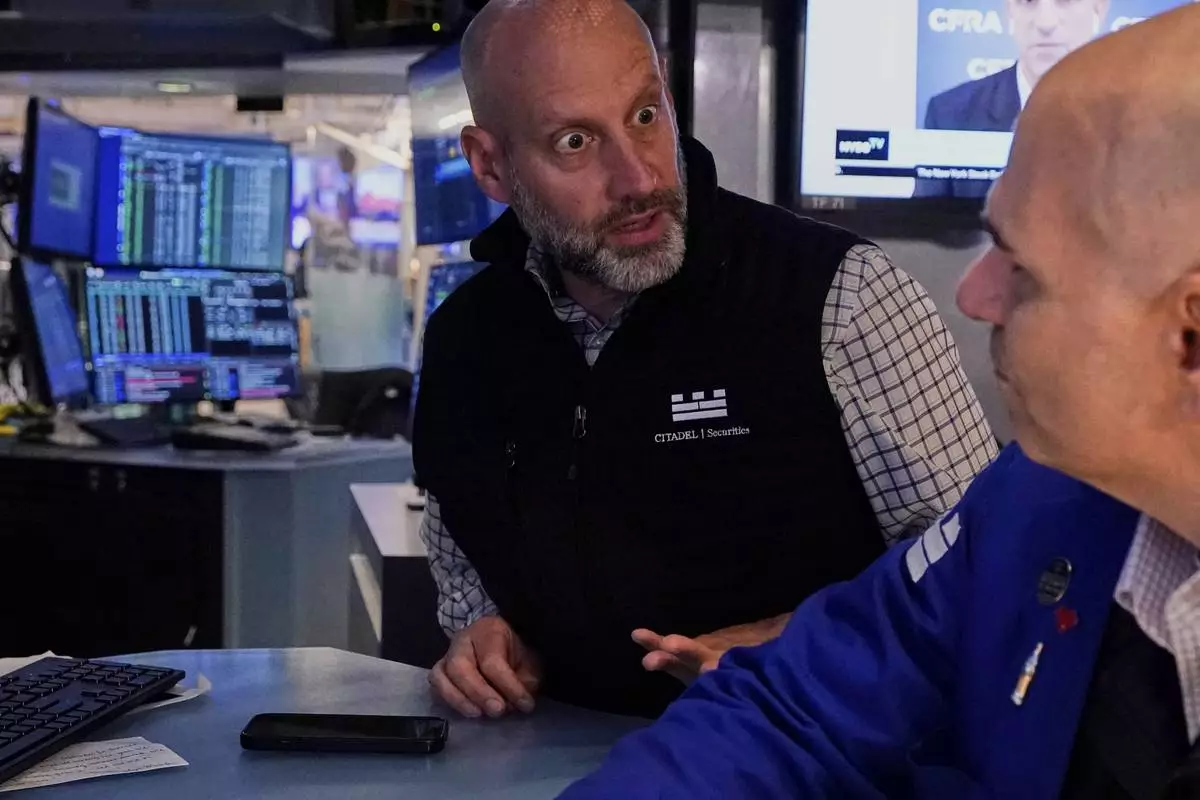
Specialists Meric Greenbaum, left, and Philip Finale confer on the floor of the New York Stock Exchange, Friday, May 2, 2025. (AP Photo/Richard Drew)
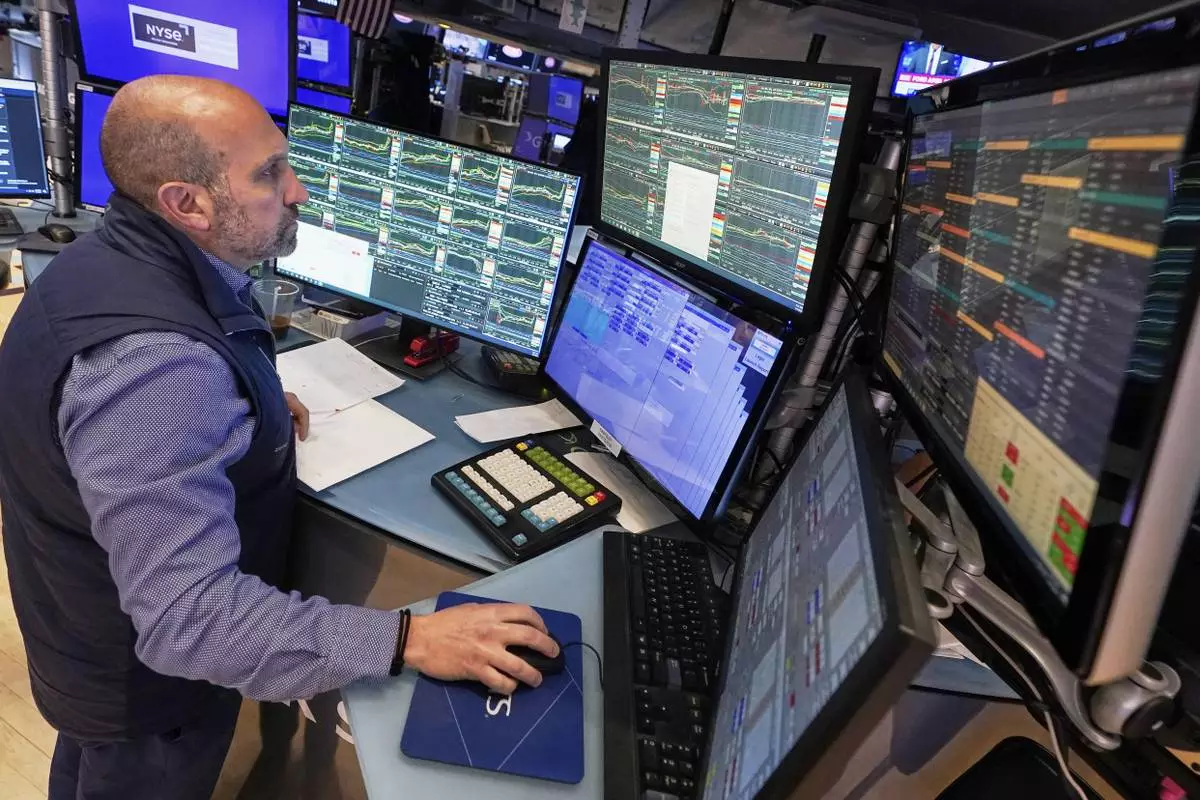
Specialist James Denaro works at his post on the floor of the New York Stock Exchange, Thursday, May 1, 2025. (AP Photo/Richard Drew)
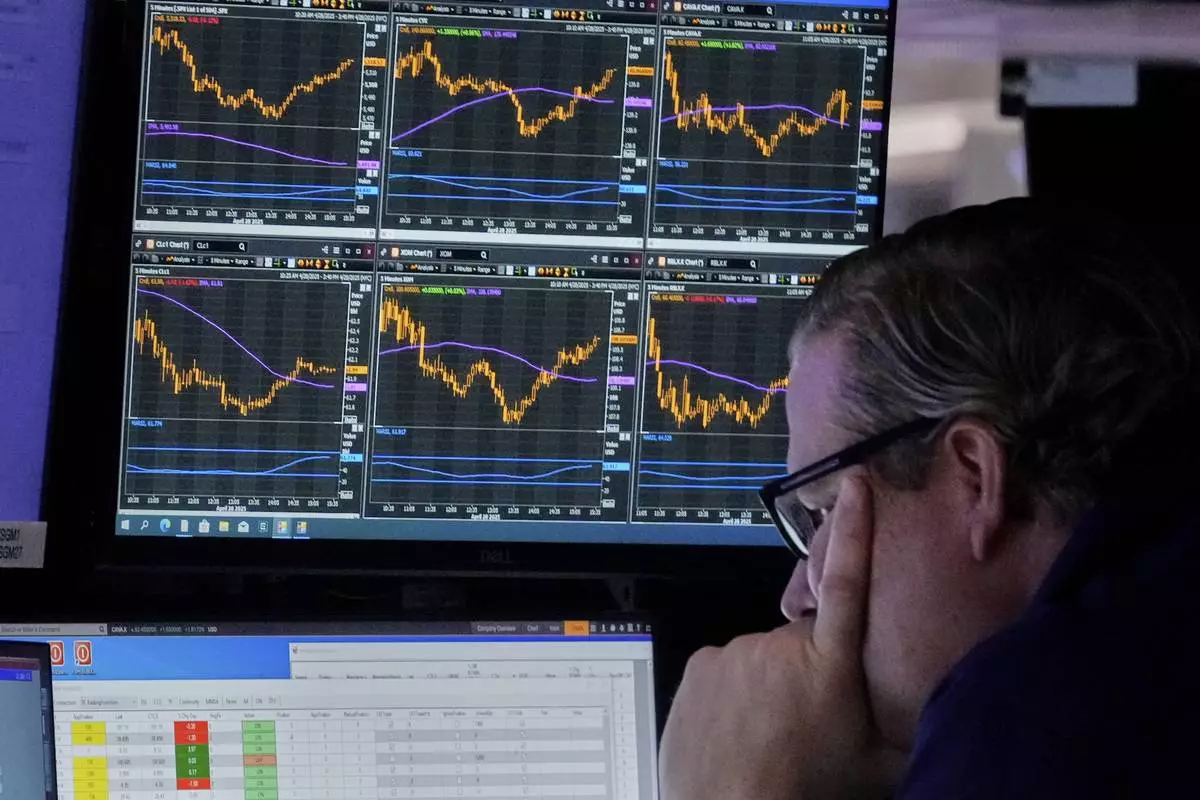
Specialist Gregg Maloney works at his post on the floor of the New York Stock Exchange, Monday, April 28, 2025. (AP Photo/Richard Drew)






